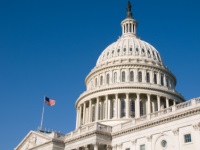A new route to soliciting direct securities investments has opened. For the first time in 80 years, start-ups and small businesses can broadly advertise and broadly solicit to raise money for private offerings. Changes to SEC Rule 506, which took effect September 23, 2013, allow companies to avoid complex and costly public offerings and instead search for investors via the Internet, newspaper, social media, direct mail, and other media. The change is the result of the JOBS Act, which required the SEC to permit general solicitation for certain private placements that are exempt from the registration requirements of Section 5 of the 1933 Act.
To travel this route, investors must be “accredited,” defined in the new rule as having a net worth of over $1,000,000 or at least $200,000 in annual income. While the accreditation has long been required for private placements, issuers were permitted to sell to non-accredited investors who qualified as sophisticated purchasers. Businesses who raise funds under the new rule must now take additional “reasonable steps” to ensure all investors are accredited. Rule 506(c) provides a non-exclusive list of means to satisfy this “reasonable steps” requirement. Issuers may use investor’s tax forms, bank statements, credit reports, and certifications from accountants, brokers, and investment advisors to ensure accreditation – assuming that investors are willing to deliver copies of such documents to issuers. There may be other means not specified that would also be acceptable also. Issuers will want to keep careful records about how they accredit investors, because they will bear the burden to establish their exemption from the registration provisions of the Securities Act. If an issuer cannot do so, it may be subject to liability for general solicitation in connection with an unregistered offering in violation of the federal securities laws. READ MORE →









